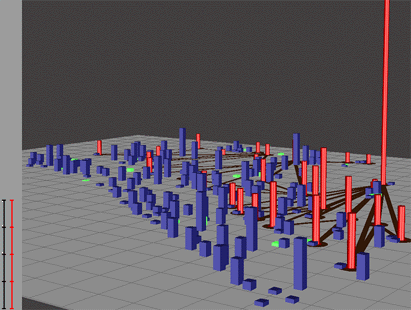RESEARCH
SAMPLES
PAPERS
PEOPLE
HOME

(Images generated by SDM)
Scale operations include all techniques that scale one or more parameters of an object set. Unlike shift operations, scale
operations maintain size and height ratios among selected objects. Thus when the size or heights of objects in the
visualization encode a data attribute, scale operations can be used instead of shift operations to expand or contract the
objects. This is so that the relative size or heights of objects correspond to the relative values of the data-attribute that
they encode.

Scale operations can also be used to put different object sets on different size or height scales. It is often the case that the
sizes and heights of objects are diverse. In these cases, the overall scale will dwarf certain objects and the height and size
relationships among them. Although logarithmic scales are sometimes used effectively to solve this problem, these
obscure simple linear relations and judgments and may be non-intuitive to many users.
In order to maintain size or height ratios among objects in the selected set, and at the same time magnify the size or
height differences, SDM enables users to view the set at a scale that is different from other objects. For example, to see
whether there are groups of short rectangles that are close together, a user first selects all short rectangles and then
scales their heights up. The two figures above show the effects of these operations. The ratio axes on the left of the right
figure shows that the selected set is scaled seven times larger than the rest of the objects.
Go to next page.


